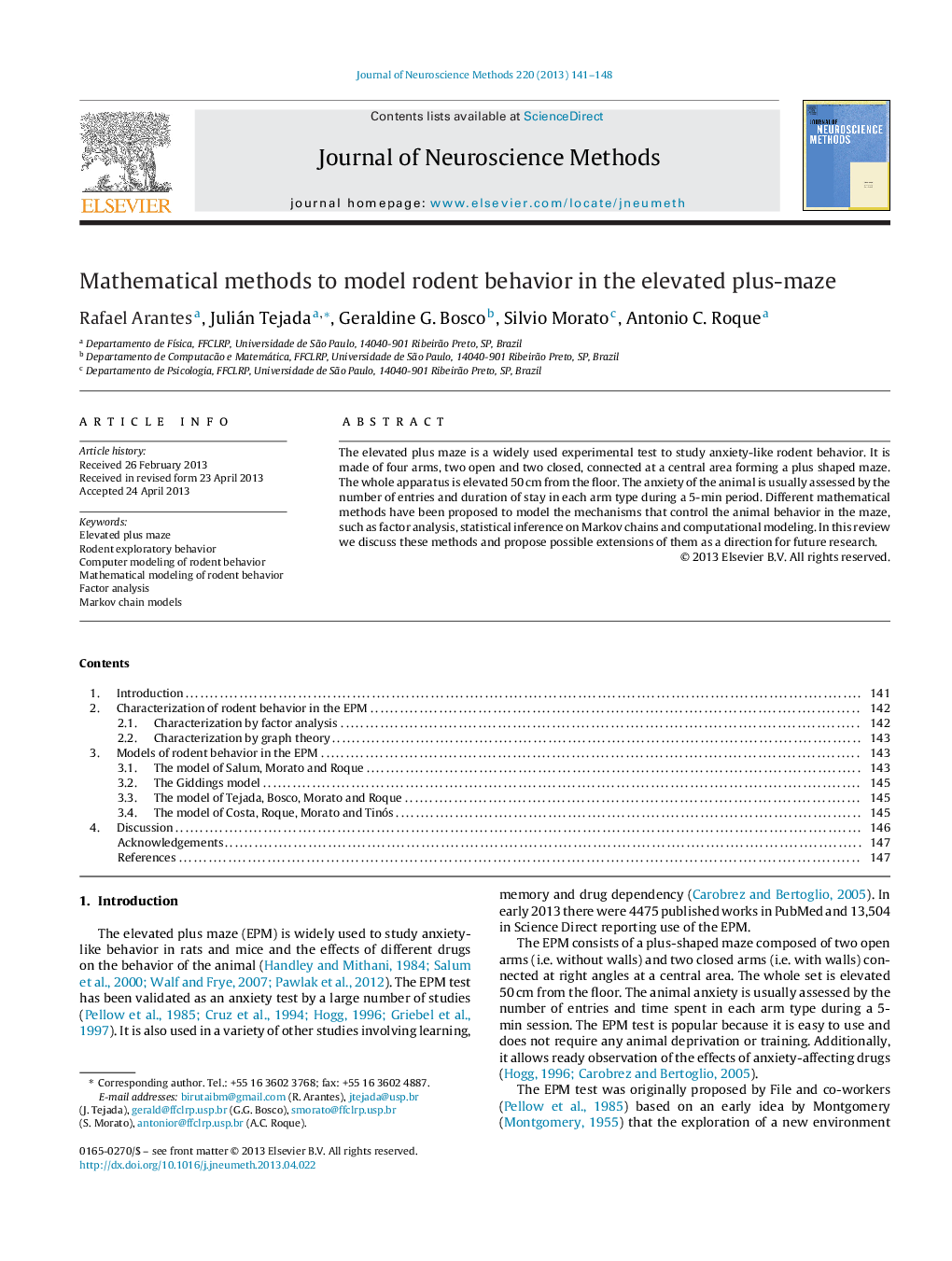| Article ID | Journal | Published Year | Pages | File Type |
|---|---|---|---|---|
| 4334989 | Journal of Neuroscience Methods | 2013 | 8 Pages |
Abstract
The elevated plus maze is a widely used experimental test to study anxiety-like rodent behavior. It is made of four arms, two open and two closed, connected at a central area forming a plus shaped maze. The whole apparatus is elevated 50 cm from the floor. The anxiety of the animal is usually assessed by the number of entries and duration of stay in each arm type during a 5-min period. Different mathematical methods have been proposed to model the mechanisms that control the animal behavior in the maze, such as factor analysis, statistical inference on Markov chains and computational modeling. In this review we discuss these methods and propose possible extensions of them as a direction for future research.
Related Topics
Life Sciences
Neuroscience
Neuroscience (General)
Authors
Rafael Arantes, Julián Tejada, Geraldine G. Bosco, Silvio Morato, Antonio C. Roque,
